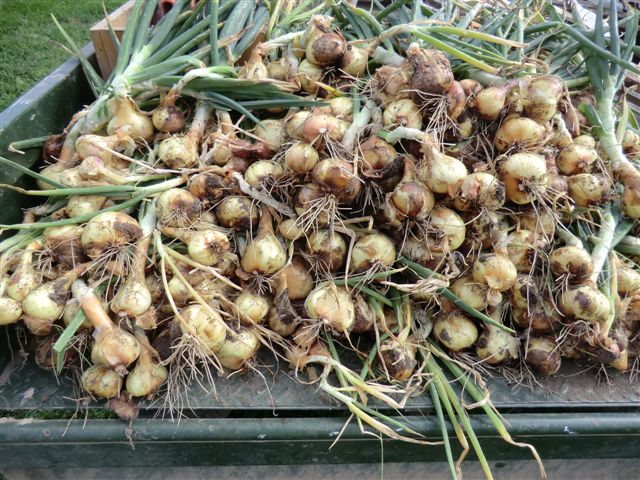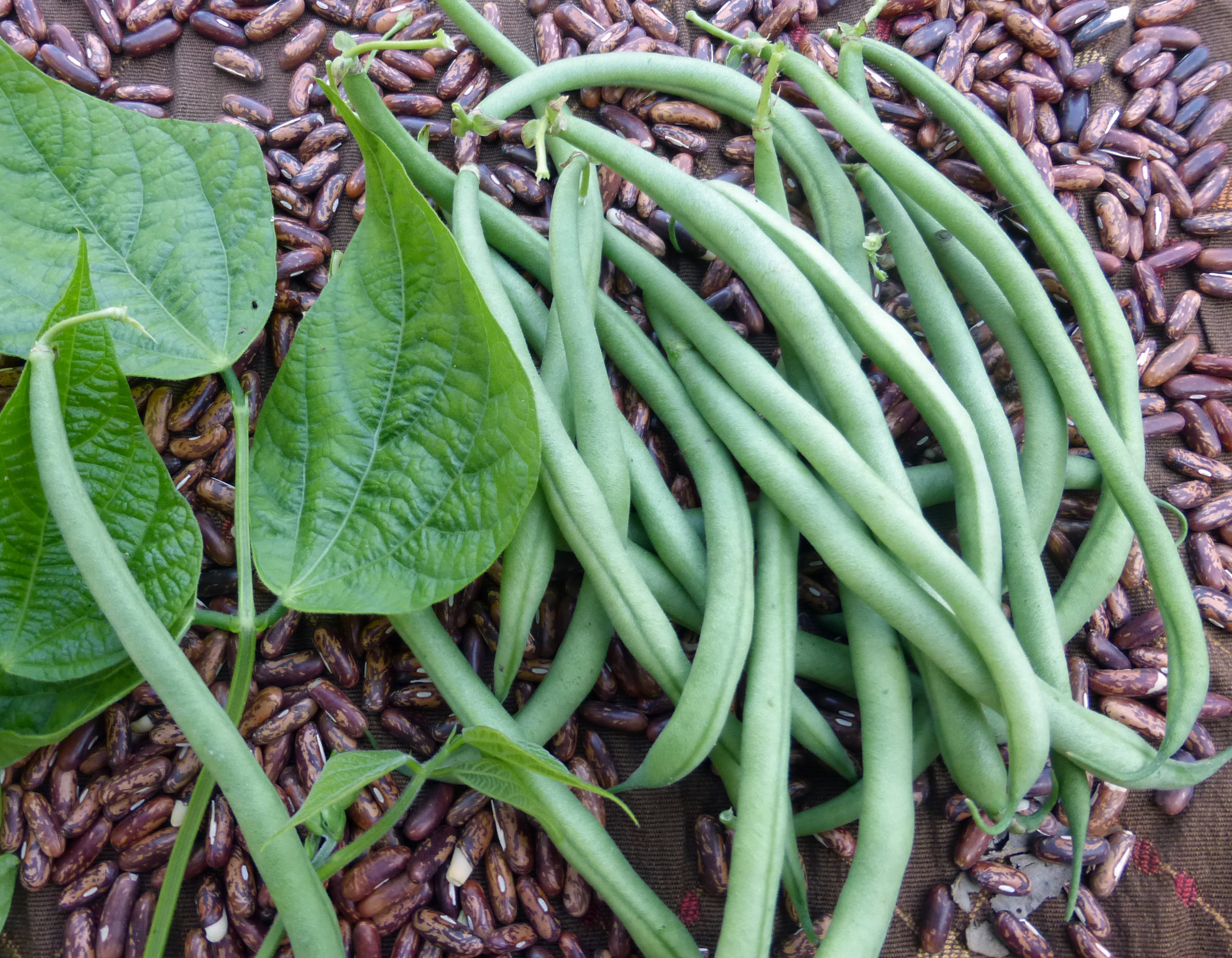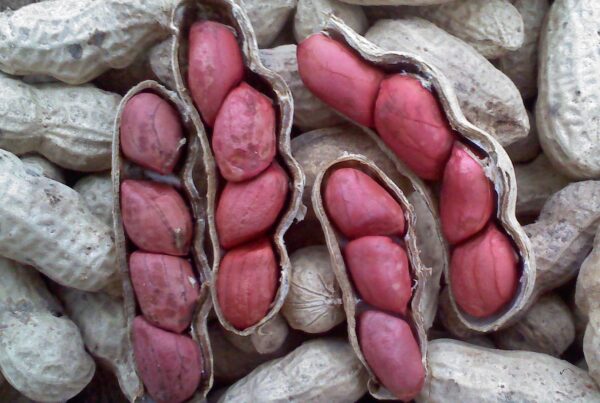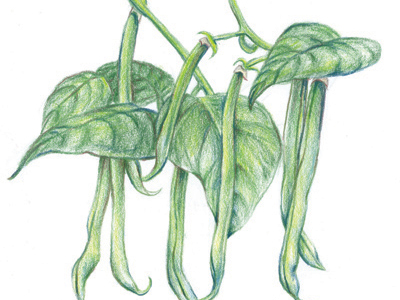Mulch tomatoes, peppers, okra, squash, cucumbers and asparagus to control weeds and retain moisture if it hasn’t already been done.
Harvest garlic and onions on a dry day after half the tops have fallen over. For better storage harvest garlic when the 6th leaf down on 50% of the plants is brown. Hang onions and garlic to air cure under cover for at least 2 weeks after harvest before trimming and storing. To learn more about growing alliums download our 4 page Garlic & Perennial Onion Growing Guide (PDF)

Continue to sow weekly successions of beans, corn, cucumbers, and summer squash. Begin sowing very heat resistant lettuces like Jericho, Anuenue, Sierra, and Slo-bolt every 7 days under light weight row cover or shade cloth. Transplant  seedlings after 3 or 4 weeks to a spot with afternoon shade on an overcast day. For a steady supply and to help avoid gluts read our blog post on Summer Succession Plantings.
 Hand pick or use BT to control Colorado Potato Beetles as soon as the first larvae are spotted on early potatoes and again every 7-10 days
Finish planting and hill up peanuts at 12″ tall and mulch before they peg. Transplant any remaining leek seedlings.
In the last week of June begin to sow Brassicas for Fall (brocccoli, cauliflower, cabbage, savoys). Make  2 or 3 sowings 7-10 days apart under spun polyester  row cover. Prepare beds and be ready to transplant Brassicas in July or August when they have 4 leaves (4-6 weeks) and other mustard greens even earlier. Keep them under row cover until plants are large and sturdy. SESE’s own Ken Bezilla offers great tips in his Fall & Winter Gardening Guide.
If you have any extra time weed and mulch any crops that need some more.
Ira Wallace Southern Exposure Seed Exchange and author of Grow Great Vegetables in Virginia







